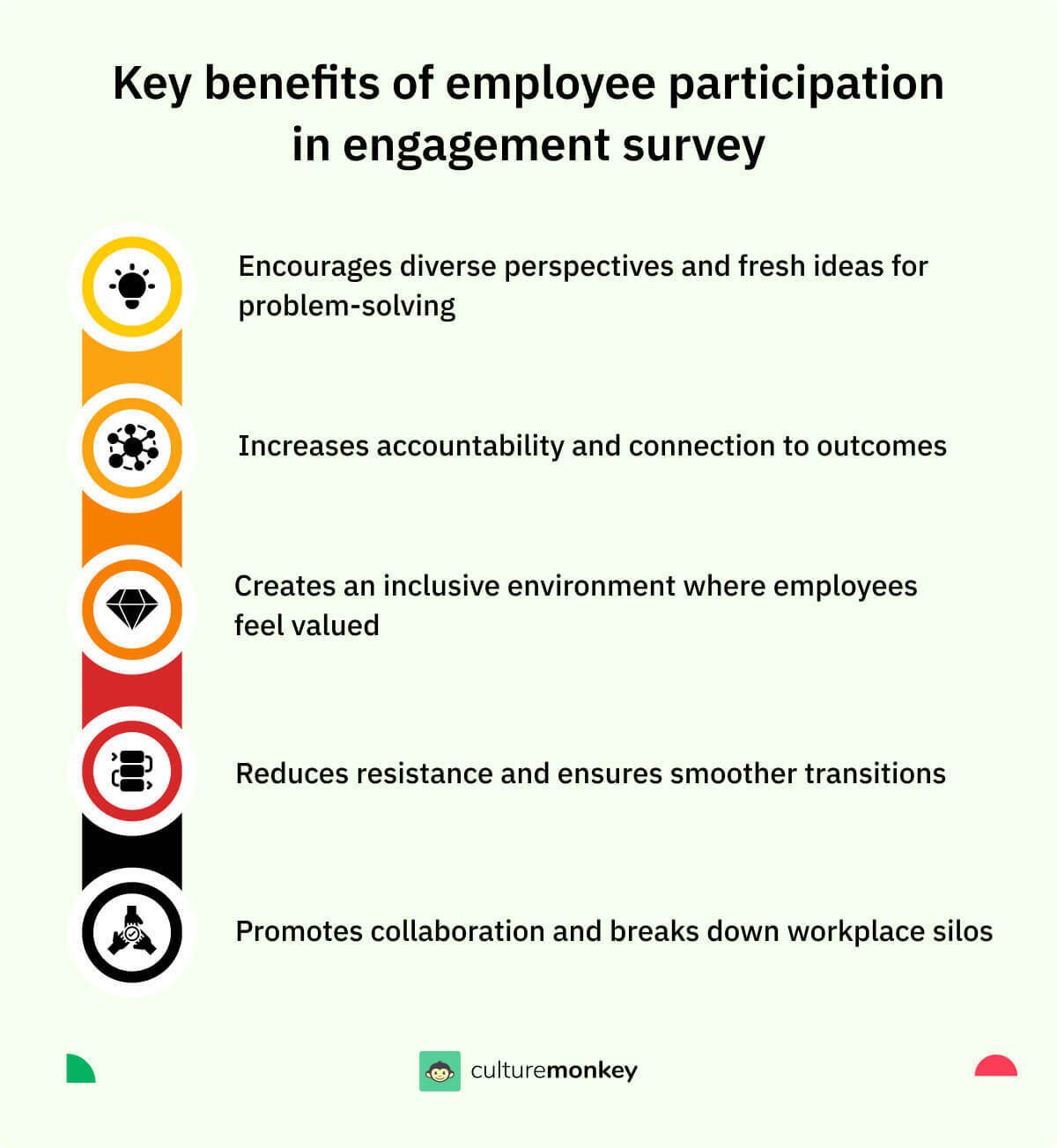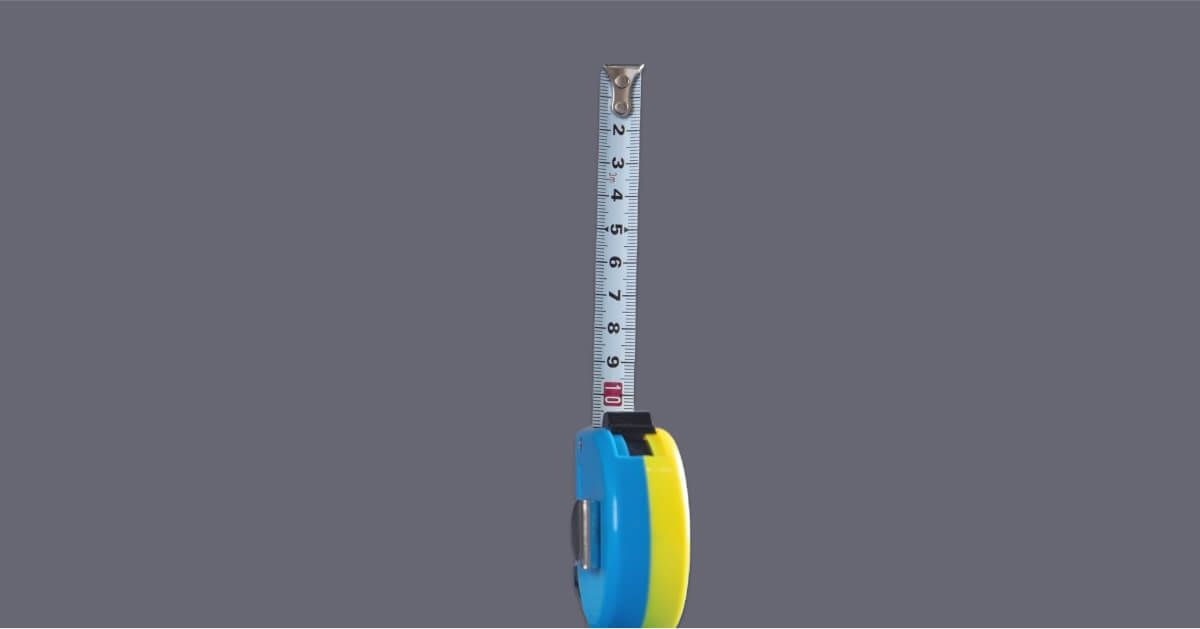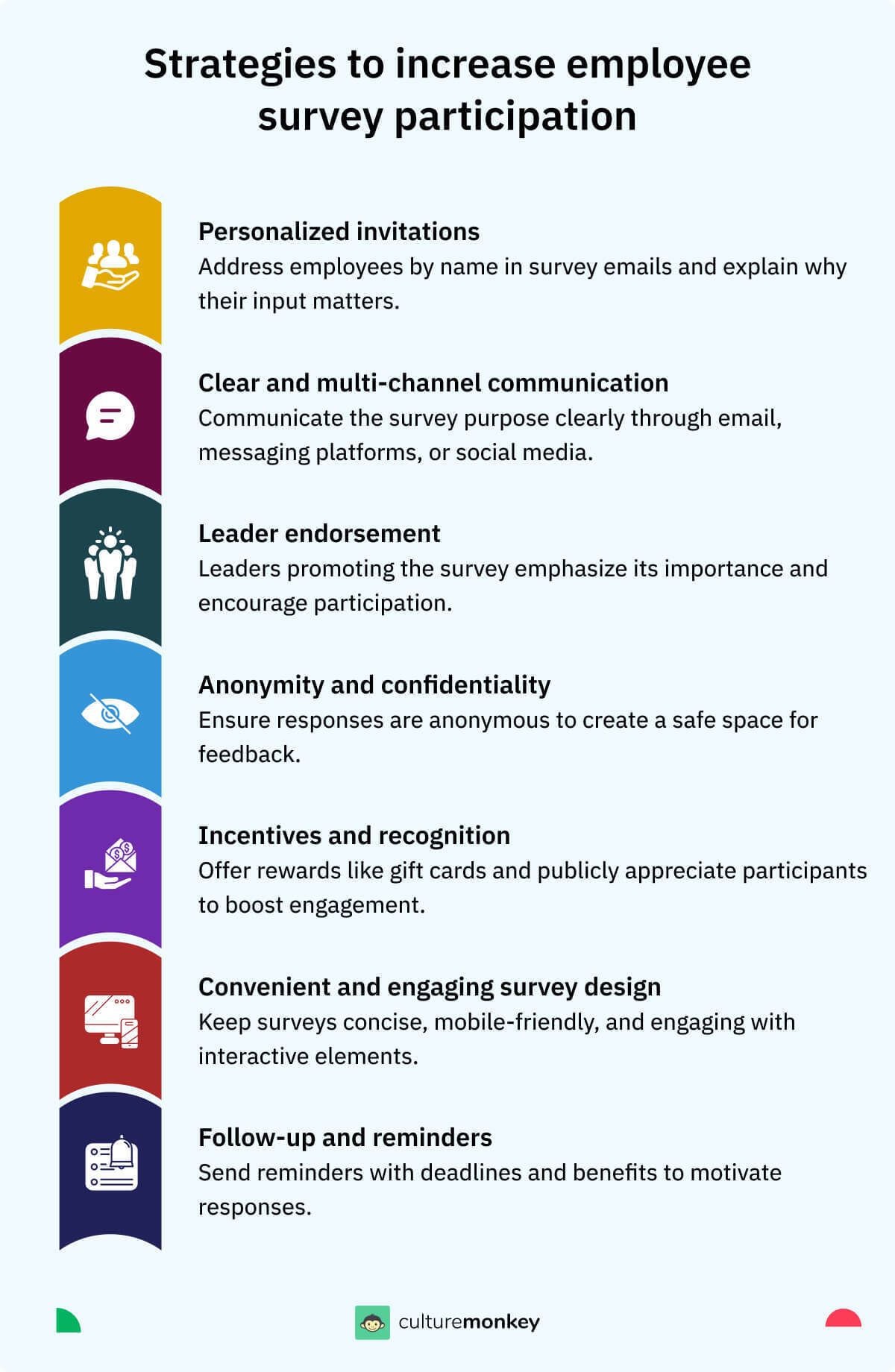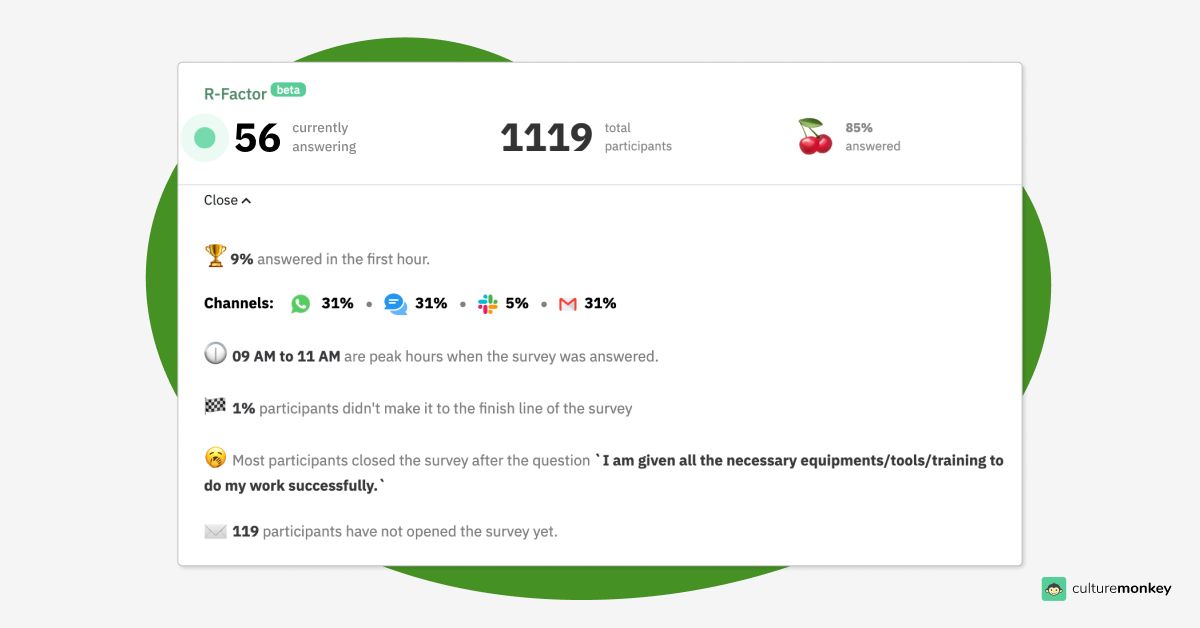How to increase employee survey participation: Best practices & tips?

Imagine this: you've spent hours crafting the perfect employee survey. You've poured your heart and soul into creating thoughtful survey questions sprinkled with a dash of wit to make it less of a snooze-fest.
You hit the "send" button, eagerly awaiting a flood of responses. But instead, you're met with deafening silence, as if your survey vanished into a black hole. It's like throwing a party and no one showing up – the ultimate bummer!
But no more! We're here to help you unlock the secret to boosting employee survey participation, ensuring your insights flow like a never-ending chocolate fountain at a party.
As the renowned philosopher Lily von SassyPants, once said, "If you want to find out what's cookin' in your employees' minds, you better bring a damn good recipe!" And that's exactly what we're about to do.
So, let's dive right in and discover the hidden ingredients that will skyrocket your survey participation rates. Get ready to transform your surveys from snooze-worthy to high-five-inducing!
Blog Highlights


- What is a good survey participation rate?
- Strategies to increase employee survey participation
- Incentives to increase employee survey participation
- How does anonymity play a key role in increasing survey participation rates?
- How can CultureMonkey help you improve employee survey participation rates?
What is the employee survey participation rate?

The employee survey participation rate measures the percentage of employees who actively participate in an organization's surveys. It indicates the level of employee engagement and willingness to provide feedback and opinions.
A high participation rate suggests that employees are interested in sharing their thoughts, which can lead to valuable insights for the company. On the other hand, a low participation rate can hinder the effectiveness of surveys, as it may not accurately represent the overall employee sentiment.
To improve participation rates, organizations can employ strategies such as clear communication and anonymous surveys, emphasizing the importance of feedback, offering incentives, and ensuring the confidentiality and anonymity of responses.
By increasing employee survey participation, companies can gain a more comprehensive understanding of their workforce and make informed decisions to drive positive change.
What is a good survey participation rate?
A good survey participation rate reflects a strong level of employee engagement and trust in organizational processes. While industry benchmarks often range between 70% and 80%, rates exceeding 90% are exceptional and indicate a deeply invested workforce.
Participation rates can vary by company size. Small companies, with more personal interactions, typically achieve 80% to 90%. Mid-sized organizations see a slightly lower range of 70% to 80% due to scaling challenges. Large enterprises, facing diverse demographics and structures, usually aim for 65% to 80%.
These benchmarks underscore the importance of tailored strategies to ensure meaningful participation across all company sizes.
Benefits of employee participation

Employee participation is more than just a checkbox; it’s the cornerstone of fostering a thriving workplace culture. When employees actively contribute to organizational initiatives, surveys, or decision-making processes, it creates a ripple effect of positivity and productivity. Let’s explore the unique advantages of employee participation.
- Enhanced innovation and creativity: Employee participation often brings diverse perspectives and ideas to the table, leading to innovative solutions and creative problem-solving. When employees feel heard, they are more likely to think outside the box and contribute fresh insights that drive the organization forward.
- Stronger sense of ownership: When employees are involved in discussions and decisions, they develop a greater sense of ownership in their roles. This translates to higher accountability, as they feel more connected to the outcomes of their contributions.
- Improved morale and job satisfaction: Participation fosters an inclusive environment, making employees feel valued and respected. This significantly boosts morale and job satisfaction, leading to a happier and more engaged workforce.
- Faster adaptation to change: When employees are included in the decision-making process, they are more likely to support and adapt to organizational changes. Their involvement reduces resistance and ensures smoother transitions.
- Strengthened team dynamics: Participation encourages collaboration, breaking down silos and improving team relationships. This leads to a more cohesive and supportive work environment, ultimately driving collective success.
Employee participation versus employee involvement
While employee participation and employee involvement are often used interchangeably, they represent distinct concepts that play unique roles in fostering a productive workplace.
- Scope of engagement: Employee participation focuses on employees contributing their opinions or feedback, often through mechanisms like surveys, meetings, or group discussions. It is typically event-based and transactional, aiming to gather input on specific topics.
In contrast, employee involvement goes deeper, engaging employees in ongoing decision-making processes. Involvement fosters a sense of ownership and long-term commitment as employees actively collaborate on shaping strategies or initiatives. - Impact on organizational culture: Participation serves as a foundational step for engagement, emphasizing communication and feedback.
However, involvement impacts organizational culture more profoundly by embedding employees into the decision-making fabric. While participation reflects an open channel of feedback, involvement builds trust and strengthens relationships between employees and leadership, fostering a more cohesive and empowered workforce.
Why does employee survey participation metrics matter?

Employee survey participation metrics provide valuable insights into the hearts and minds of your workforce. They go beyond mere data points, vividly portraying employee sentiments, needs, and aspirations. Here are some of the reasons why they are so important.
1) Insights and Feedback: Higher participation rates yield a more accurate representation of employee opinions, providing valuable insights for decision-making and identifying areas for improvement.
2) Employee Engagement: Engaging employees in surveys demonstrates that their opinions matter, fostering a sense of ownership and engagement within the organization.



It all came down to employee engagement. It all came down to recognition. It all came down to leadership, which led to every sailor feeling ownership and accountability for the results. You can ask a team to accomplish a mission but you can’t order excellence.
Partner
Aegis Performance Group
3) Organizational Alignment: A high survey participation helps align employees' perceptions and expectations with organizational goals, ensuring a shared vision and direction.
4) Improved Communication: Surveys create opportunities for open communication channels between employees and management, promoting organizational transparency and trust.
5) Data-Driven Decisions: High participation rates generate robust data sets that enable data-driven decision-making, leading to more effective strategies and initiatives that address employee concerns and enhance overall performance.
Strategies to increase employee survey participation

Encouraging employees to respond to surveys can be challenging, but it is crucial to obtaining valuable insights and fostering a culture of open communication and continuous improvement. Here are effective strategies to increase survey response rates
1) Personalized invitations
Customize employee engagement survey invitation emails by addressing employees by name and explaining why their specific input is valuable. Highlight how their unique experiences and perspectives contribute to the overall success of the survey. Crafting personalized emails ensures that employees feel recognized and motivated to share their feedback.
2) Clear communication
Clearly communicate the survey questions, purpose, relevance, and impact to employees. Explain how their feedback will directly contribute to positive organizational changes, such as process improvements, policy changes, or employee development initiatives. Highlight the value of their input and emphasize that their opinions matter.
3) Communication channels variety
Utilize multiple communication channels to reach employees, such as email, internal messaging platforms, and even social media. This ensures that the survey invitation reaches employees through their preferred channels, increasing the likelihood of engagement.
4) Leader endorsement
Seek the support and endorsement of organizational leaders, including senior executives and managers. When leaders emphasize the importance of the survey and encourage participation, it sends a strong message that employee feedback is valued and can drive positive change.
5) Anonymity and confidentiality
Assure employees that their responses will remain anonymous and confidential. Employees who feel safe and protected are more likely to provide honest and candid feedback. Emphasize that their responses will not be traced back to them individually, creating a sense of psychological safety.
6) Incentives and recognition
Consider offering incentives to motivate employees to participate. These can include small rewards like gift cards, extra paid time off, or a chance to win prizes through a raffle. Additionally, publicly acknowledge and appreciate employees who have completed the survey, recognizing their contribution to the organization and creating a sense of pride.
7) Convenient and accessible
Make the survey easily accessible and user-friendly. Ensure that it can be accessed from various devices, such as desktops, laptops, tablets, or mobile phones. Send reminders about the survey, including deadlines and instructions. Consider providing a designated time during work hours for employees to complete the survey, minimizing any barriers to participation.
8) Short and engaging surveys
Keep surveys concise and engaging by using clear and straightforward language. Break down longer surveys into shorter sections or modules, allowing employees to complete them in manageable chunks. Incorporate interactive elements like videos or visuals to enhance engagement.
9) Follow-up reminders
Send timely follow-up email reminders throughout the survey duration to employees who haven't yet participated. Highlight the remaining time and reiterate the benefits of participating, emphasizing that their input is crucial in shaping organizational decisions.
By implementing these strategies, organizations can create a supportive and engaging survey environment, resulting in increased employee participation and richer insights for informed decision-making.
Why survey design matters?

A well-designed survey is more than a set of questions; it’s a strategic tool that shapes the quality and reliability of the insights you gather. Poor design can lead to disengagement and unreliable data, while thoughtful design ensures high participation and actionable results. Here’s why survey design is crucial:
- Enhanced user experience: A clean, intuitive layout makes it easier for employees to navigate the survey, encouraging completion. Overly complicated designs can frustrate participants and reduce response rates.
- Clarity of questions:Ambiguously worded questions can confuse respondents, leading to inaccurate data. Well-structured surveys with concise and clear questions improve the reliability of feedback.
- Engaging visual design: Incorporating modern, visually appealing elements can make the survey more engaging, reducing the monotony often associated with lengthy forms.
- Optimized accessibility: A responsive survey design ensures compatibility across all devices-mobile phones, tablets, and desktops, making it convenient for employees to participate anytime, anywhere.
- Balanced question flow: Thoughtful sequencing of questions avoids survey fatigue, maintaining participants’ interest and ensuring quality responses throughout the survey.
Incentives to increase employee survey participation

Incentives play a crucial role in motivating employees to participate in surveys, turning an ordinary feedback request into an opportunity employees are eager to embrace.
Well-thought-out incentives not only increase participation but also signal the organization’s appreciation for their time and input. Here are some unique and effective incentive ideas to boost survey participation:
- A small gift card: Offering a small gift card, whether for a coffee shop, an online store, or a local business, serves as a tangible token of appreciation. It demonstrates that the organization values employees’ time and effort in sharing their feedback.
- Offer PTO: Granting employees a few extra hours or even a day off for completing surveys can be a powerful motivator. This not only encourages participation but also promotes work-life balance, showcasing the organization’s commitment to employee well-being.
- Plan an experience: Create opportunities for employees to attend industry-relevant seminars, conferences, or workshops. Such experiences enrich their professional growth and add an extra layer of value to their survey participation.
- Offer time with your CEO: Early participants who complete the survey will have the exclusive opportunity to engage directly with the CEO in a personalized setting, such as a lunch, meeting, or Q&A session. This reward fosters a sense of recognition and connection, emphasizing the value the organization places on their proactive feedback.
- Exclusive team bonding activity: Organize a unique team bonding event, such as a fun outing or virtual game session, for participants. This not only rewards them but also strengthens workplace relationships, enhancing engagement beyond the survey.
How does anonymity play a key role in increasing survey participation rates?

Anonymity is a cornerstone of successful employee surveys, directly impacting participation rates and the quality of feedback received. By ensuring confidentiality, organizations create an environment where employees feel safe to share their honest opinions, leading to more reliable and actionable insights. The following are the key points highlighting how anonymity boosts survey participation rates:
- Creates a safe space for honest feedback: Anonymity assures employees that their responses are protected, allowing them to share honest opinions without fear of consequences or judgment.
- Eliminates fear of reprisal: By ensuring anonymity, employees feel free to provide candid feedback, even on sensitive or critical topics, without concerns about negative repercussions.
- Encourages transparency: When employees know their identity is concealed, they are more likely to express their thoughts openly, fostering a culture of trust and openness.
- Demonstrates respect for privacy: Guaranteeing anonymity highlights an organization’s commitment to employee privacy, strengthening trust and psychological safety.
- Reduces bias in responses: Anonymity eliminates personal identifiers, ensuring feedback is evaluated based on content alone. This leads to more accurate and unbiased data.
- Motivates participation: When employees feel their identity is safeguarded, they are more inclined to engage in surveys, reassured that their voices matter and will be heard without prejudice.
How taking timely actions on employee feedback can increase survey participation?
When employees see that their feedback is promptly acknowledged and acted upon, it demonstrates that their opinions are valued and taken seriously. This responsiveness fosters a sense of trust and encourages employees to participate in future surveys, knowing that their input leads to tangible actions.



Create caring and robust connections between every employee and their work, customers, leaders, managers, and the organisation to achieve results that matter to everyone in this sentence.
Founder
David Zinger Associates
It also allows organizations to address immediate concerns and make necessary improvements promptly. This ensures that subsequent surveys remain relevant and focus on areas that matter to employees, increasing their motivation to participate.
The connection between employee satisfaction and survey participation rates
Employee satisfaction and survey participation rates are deeply interconnected. Satisfied employees are more likely to engage with surveys, viewing them as an opportunity to contribute to organizational improvement. Conversely, low satisfaction levels may lead to disengagement and reluctance to participate.
High satisfaction levels create a sense of trust and openness, encouraging employees to share their honest feedback. When employees believe their voices are valued and lead to meaningful changes, they feel more connected to the organization.
On the other hand, consistent low participation rates could indicate underlying dissatisfaction, signaling the need for proactive leadership interventions to rebuild trust and engagement.
How can CultureMonkey help you improve employee survey participation rates?

The easiest way to boost participation rates in employee surveys is to make it easy for employees to share their feedback. How is that possible? By sharing employee feedback surveys on the most commonly used employee platforms like WhatsApp, Slack, email, and more.
CultureMonkey is an employee engagement platform that lets you do that by letting you share surveys with your employees’ favorite messaging channels using integrations. It enables multi-channel integrations to send simple, subtle nudges via the right channels, indirectly influencing your employees to make the right decisions and building a culture of participation.
You can also collect employee engagement surveys via Kiosk, its standalone app. The platform allows you to gather feedback from any employee with unique identifiers such as mobile number and date of birth. It also runs in-depth analytics on the collected survey data and views it in survey reports and dashboards.
Conclusion
Increasing employee survey participation is crucial for organizations seeking valuable insights, fostering employee engagement, and driving positive change. By implementing effective strategies such as clear communication, ensuring anonymity, offering incentives, and taking timely actions on feedback, organizations can significantly boost participation rates and maximize the benefits of employee surveys.
Summary
Boosting employee survey participation starts with clear communication, personalized invitations, and thoughtful survey design. Leadership support, anonymity, and meaningful incentives encourage honest feedback and engagement.
Acting on employee input builds trust, motivates participation, and fosters a culture of openness. These strategies create a stronger connection between employees and organizations, driving valuable insights and meaningful workplace improvements.
FAQs
1) How can gamification be used to increase participation in employee engagement surveys?
Integrating gamification elements, such as leaderboards, badges, or rewards, can make the survey process more engaging and enjoyable for employees. Adding a competitive and interactive component incentivizes engagement survey participation and boosts response rates. Gamification also fosters a sense of accomplishment, encouraging employees to complete the survey. Additionally, it can create a fun and collaborative atmosphere, driving higher participation.
2) What are some effective ways to promote survey participation through internal communication channels?
Internal communication channels like company newsletters, intranet platforms, or team meetings are used to generate awareness and encourage survey participation. Share the survey link, highlight its importance, and provide regular updates to create a sense of urgency and involvement. Leveraging leadership endorsements in these channels can further build credibility and engagement. Using targeted reminders through these platforms also ensures employees stay informed and motivated.
3) Are there any innovative approaches to encourage employee survey participation?
Exploring creative approaches like interactive surveys with visually appealing designs, incorporating multimedia elements, or using unconventional question formats can pique employee interest and motivate them to participate. Experimenting with new approaches keeps surveys fresh and captures employees' attention. Incorporating real-time feedback mechanisms can also enhance the experience and build trust. Ensuring mobile-friendly survey formats allows employees to participate conveniently anytime, anywhere.
4) How do you ensure employee participation?
Ensure staff participation by fostering trust, offering anonymity, providing clear communication, and emphasizing the survey's impact. Use survey incentive ideas, make surveys accessible, and send employee engagement survey invitation email reminders. Demonstrate how feedback drives real changes to improve participation rates and motivate employees. Additionally, involve employees in decision-making processes to build trust and encourage sustained participation.
5) How do you encourage employees to respond to surveys?
Boost employee survey participation rates by emphasizing why survey design matters. Use incentives to increase employee survey participation, such as survey incentives like PTO. Highlight how to get people to participate in a survey through clear communication, anonymous responses, and timely actions on feedback. Incorporating creative participation examples like team challenges can further engage employees.
6) How does employee participation increase motivation?
Active employee participation in decision-making and feedback fosters trust, demonstrating that their input matters. When employees are involved, they see their role in participation in groups or initiatives, increasing motivation. Effective programs should also focus on measuring employee participation program effectiveness for sustained engagement. This connection between engagement vs participation highlights the motivational impact of a transparent and inclusive culture.



